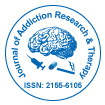Unsere Gruppe organisiert über 3000 globale Konferenzreihen Jährliche Veranstaltungen in den USA, Europa und anderen Ländern. Asien mit Unterstützung von 1000 weiteren wissenschaftlichen Gesellschaften und veröffentlicht über 700 Open Access Zeitschriften, die über 50.000 bedeutende Persönlichkeiten und renommierte Wissenschaftler als Redaktionsmitglieder enthalten.
Open-Access-Zeitschriften gewinnen mehr Leser und Zitierungen
700 Zeitschriften und 15.000.000 Leser Jede Zeitschrift erhält mehr als 25.000 Leser
Indiziert in
- CAS-Quellenindex (CASSI)
- Index Copernicus
- Google Scholar
- Sherpa Romeo
- Öffnen Sie das J-Tor
- Genamics JournalSeek
- Akademische Schlüssel
- JournalTOCs
- SafetyLit
- Nationale Wissensinfrastruktur Chinas (CNKI)
- Elektronische Zeitschriftenbibliothek
- RefSeek
- Hamdard-Universität
- EBSCO AZ
- OCLC – WorldCat
- SWB Online-Katalog
- Virtuelle Bibliothek für Biologie (vifabio)
- Publons
- Genfer Stiftung für medizinische Ausbildung und Forschung
- Euro-Pub
- ICMJE
Nützliche Links
Open-Access-Zeitschriften
Teile diese Seite
Abstrakt
Aspects of Substance Displacement - From Illicit Drugs to Novel Psychoactive Substances
Andersson Martin and Kjellgren Anette*
Several hundred new synthetic drugs, novel psychoactive substances (NPS) or “legal highs” have in recent years appeared on the drug market. These can effortlessly be obtained from on-line vendors, offering an easy access to a plethora of new and untested substances, often with unknown or dangerous effects. Several different attempts to reduce the availability of NPS and to prevent accidents and fatalities have been applied by governments around the world. Nonetheless this complex and constantly evolving situation provides palpable dilemmas and challenges to legislators and prevention strategists. One unintended consequence from prohibition and current drug policies occurs when possibly more precarious substances are used to substitute older and more well-known illicit drugs; so called “substance displacement”. We have performed extensive research on the use of NPS, by analyzing Internet resources (drug discussion forum, on-line questionnaires), and published several NPS studies. During our research we observed how substance displacement is a common issue, with implications for both clinical practices, drug prevention strategies, as well as for legislators. In the present review we discuss two common themes of substance displacement: 1) Synthetic cannabinoids replace herbal cannabis, and 2) Different attempts for self-medication using NPS. Incitements for substance displacement, that exposes the user to possibly more harmful substances, are founded both in legislation (availability of substances and fear of legal repercussions) as well as from certain policies or cultural perceptions of various medical conditions. We offer no obvious solutions to these complications, but would like to contribute to awareness of how these factors effects drug users and how measures intended to reduce harm in many cases have the opposite effects. Further studies on the divergent motivations and different groups of NPS users are highlighted as imperative to find new and realistic solutions going forward.
Zeitschriften nach Themen
- Allgemeine Wissenschaft
- Biochemie
- Chemie
- Genetik und Molekularbiologie
- Geologie und Geowissenschaften
- Immunologie und Mikrobiologie
- Klinische Wissenschaften
- Krankenpflege und Gesundheitsfürsorge
- Landwirtschaft und Aquakultur
- Lebensmittel & Ernährung
- Maschinenbau
- Materialwissenschaften
- Medizinische Wissenschaften
- Pharmazeutische Wissenschaften
- Physik
- Sozial- und Politikwissenschaften
- Umweltwissenschaften
- Veterinärwissenschaften
Klinische und medizinische Fachzeitschriften
- Anästhesiologie
- Augenheilkunde
- Betrieb
- Dermatologie
- Diabetes und Endokrinologie
- Gastroenterologie
- Genetik
- Gesundheitspflege
- Immunologie
- Infektionskrankheiten
- Kardiologie
- Klinische Forschung
- Medizin
- Mikrobiologie
- Molekularbiologie
- Neurologie
- Onkologie
- Pädiatrie
- Pathologie
- Pflege
- Toxikologie
- Zahnheilkunde

 English
English  Spanish
Spanish  Chinese
Chinese  Russian
Russian  French
French  Japanese
Japanese  Portuguese
Portuguese  Hindi
Hindi